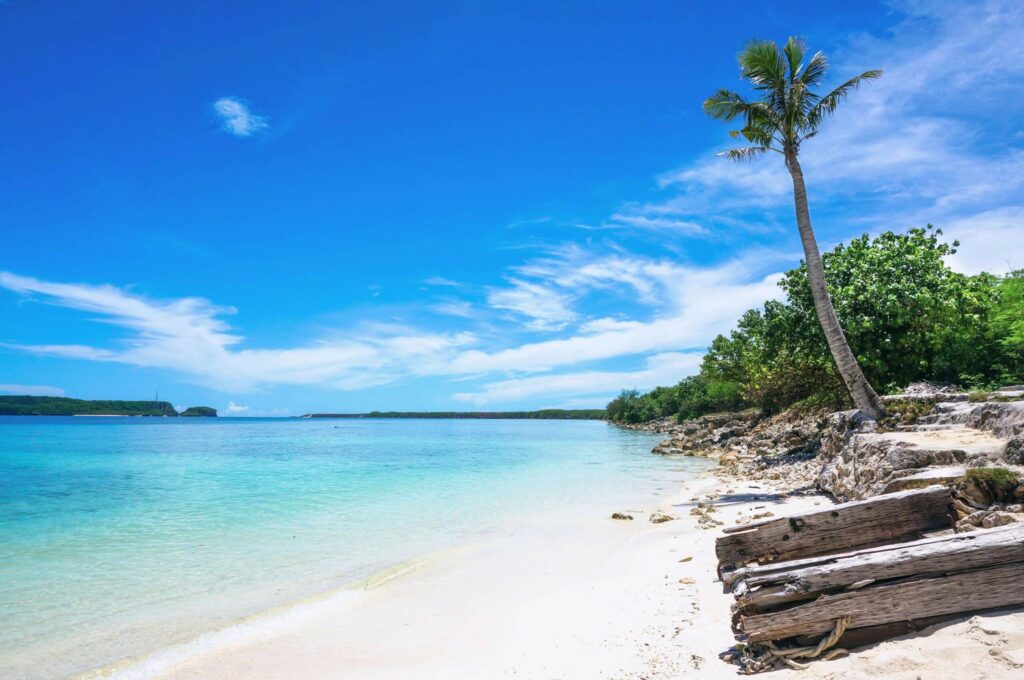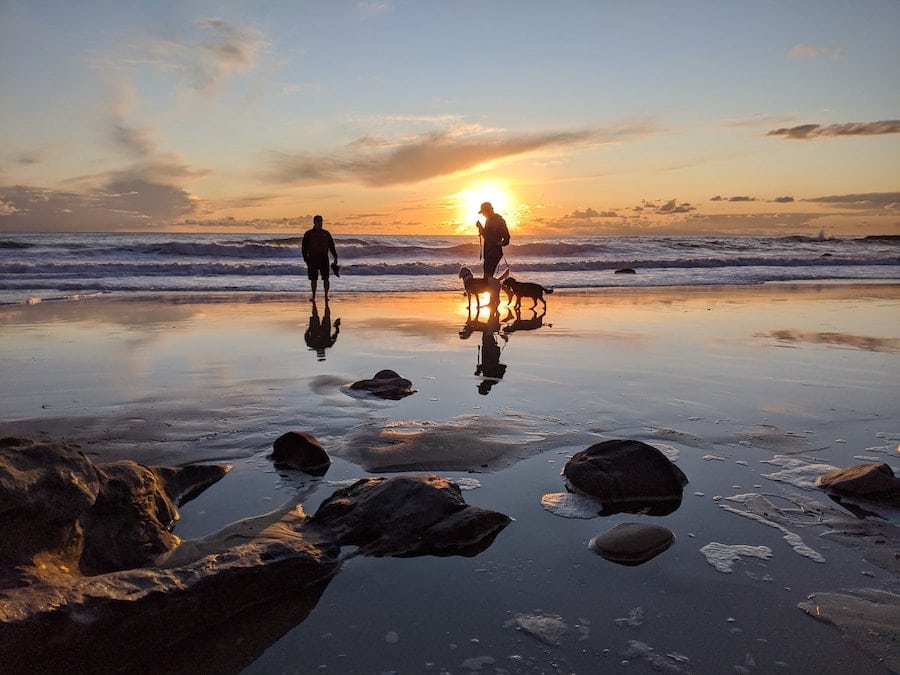Vermont Passes Compact Nursing License Legislation

On June 7, 2021, Vermont passed legislation to enact the Nurse Licensure Compact. This new legislation allows registered nurses and licensed practical/vocational nurses to practice in any other Nurse Licensure Compact state, if they have a multi-state compact license. The compact was signed into law by Governor Phil Scott of Vermont, and is set to be implemented on February 1, 2022. Vermont will become the 36th jurisdiction to enact the Nurse Licensure Compact. With this new legislation, the Vermont legislature hopes to improve public safety by making it easier for nurses and other healthcare professionals to travel to and practice in their state.
2021 Q2 Outlook for Healthcare Travel Jobs

April is another popular month for healthcare travelers to start a new assignment. If you took a new healthcare assignment in January, chances are that you’re now on the hunt for a new one or considering an extension. Dealing with the global pandemic for more than a year has rocked the healthcare travel market with demand pay rates changing almost weekly. Here are job trends we’re seeing in the travel nursing and travel allied sectors as we enter the second quarter of 2021. Learn up-to-date insights and tips to navigating this ever-changing job market. Hospitals Dropping Pay Rates to Pre-COVID Levels COVID-19 cases have decreased as more people are vaccinated and continue to follow CDC guidelines, which means hospitalizations are down. For example Parkland Hospital, which was once the largest virus treatment centers in the Dallas-Fort Worth area has now closed all six of its COVID-19 wards after seeing a dramatic drop in active cases from an average of 200 during the peak to 20 today. That’s good news! But in turn, hospitals are no longer needing healthcare travelers at the levels they did during the peak of the pandemic. Hospitals have decreased the number of travelers they need, dropping the number of job openings nationwide to approximately 8,000. The average bill rates for the jobs hospitals do have posted also decreasing back down closer to rates before the pandemic began. A trend being discussed in several Travel Nursing Facebook Groups is the possibility of hospitals dropping pay rates of an active travel assignment before it ends, and cutting hours worked or canceling an assignment all together because lower census from less COVID patients. More Competition = Be More Flexible More healthcare professionals left their permanent positions to travel last year due to the pandemic’s high demand and high crisis pay packages. Now that the demand for nursing and allied health jobs is stabilizing, there’s still a higher number of travelers looking for new assignments resulting in more competition for desired jobs. It’s typical for the hospital to receive more than 20 submittals to a single job within the first hour of posting their need. To handle higher competition for jobs, travelers should be try to more flexible for what they’re looking for. Whether it’s being more open to more locations and compromising special scheduling or shift requests, the more flexible a traveler can be, the more likely you can find a new assignment faster. Does your agency know which hospitals are actually moving? As patient census continues to drop in select areas, some hospitals are scaling back on their need for travelers all together. As the facilities are trying to navigate the changing needs and demand, a travel assignment they posted last week may not be needed any more the following week. Tip: Make sure you’re working with a trusted, experienced healthcare staffing company that has regular contact with their hospital clients and can tell you if a position you submit for is actively interviewing and booking travelers or not. Beware of stagnant job boards or advertisements promoting fake jobs that are no longer open. What’s the possibility of another job peak and crisis needs? As states are scaling back restrictions and more people are traveling and going back to life as “normal,” the U.S. reported a 12 percent increase of average new daily cases as of Sunday, March 28. “What we’re likely seeing is because of things like spring break and pulling back on the mitigation methods that you’ve seen. Now, several states have done that,” Fauci told CBS’ “Face the Nation” on Sunday. With more people getting vaccinating, including healthcare professionals and elderly or at-risk people, it’s not likely that hospitalizations will peak as they did last year and in January 2021. But only time will tell. Check back regularly for updated travel nursing and allied health job market news!
Guam Becomes First U.S. Territory to Join Nurse Licensure Compact (NLC)

It just got easier for travel nurses to work in the Pacific! Guam has officially become the first U.S. territory to join the Nurse Licensure Compact (NLC). The state’s Governor Lourdes “Lou” Leon Guerrero signed the new bill into effect March 5, 2021. “Today, Guam joins a growing number of states stepping into the future of nurse licensure,” said Sen. Mary Camacho Torres in a press release by NCSBN. “With the enactment of the NLC, nurses from other member states can now come here and practice immediately, increasing our people’s access to safe, quality care without the need to apply and wait for a Guam nursing license or disaster declaration.” The new bill to enact Guam into the NLC didn’t come without debate and opposition. For example reported by The Guam Daily Post, some worried that the bill would cause current nurses practicing on the island to leave to higher paying positions, leaving the Guam healthcare systems even more short staffed. But during a public hearing held in February 2021, supporters defended joining the NLC with personal testimonies. Additionally a survey from The Guam Board of Nurse Examiners found that 98 percent of nurses who responded supported joining the NCL. Guam’s entry into the NLC allows nurses holding any active compact nursing license to practice in Guam to assist with the nursing shortage. Residents of Guam will not be able to obtain a multistate license until the NLC is fully implemented in 2022. Why Guam? If you didn’t know, Guam is an organized unincorporated territory of the U.S. located in the Western Pacific Ocean that spans 210 square miles. In 2019, the island had an estimated population of around 167,300 and saw more than 1 million vacationers per year. The tropical rainforest climate also brings a steady 75 to 85 degrees year-round. Filled with rich culture, history and cuisine, Guam’s island lifestyle offers healthcare travelers a ton to do outside of the hospital. Visit The Guam Guide to discover popular attractions, beaches and more.
Travel Nursing & Allied Pay Packages Stabilizing to Pre-COVID Levels

The travel nursing and allied health job market is facing another dramatic shift as we enter a new stage of the pandemic. The number of healthcare travel jobs is steadily decreasing each week and as you may have noticed, pay rates are dropping. Here’s why and recommendations for getting the highest pay packages. Where did the crisis jobs go? More people are getting vaccinated daily and COVID cases and hospitalizations are decreasing. Good news! Therefore, hospitals’ patient census across the country is returning to normal levels and there is less demand for crisis jobs. “We’ve seen a decrease in both the number of jobs and pay rates from healthcare facilities across the country,” said Jennifer Pomietlo, VP of Business Development at StaffDNA. “But it’s not because they don’t need healthcare travelers anymore, they’re just returning to non-crisis rates.” In January’s peak, there were more than 30,000 travel nursing openings nationwide, but as of March 2021 that number has fallen to approximately 8,000. The once $6,000 to $10,000 weekly pay packages are gone. So what does the average traveler’s pay package look like now? According to StaffDNA, pay rates for travelers have decreased 25% on average since vaccinations began—depending on the location and specialty. Lock in Pay Rates Now In 2019 pre-COVID, average pay packages for travel nurses were around $1,800 to $2,000 per week. Today, StaffDNA has assignments averaging $3,000 per week and up to $4,400 per week, but rates may continue to drop so we recommend travelers lock in their assignments now—whether it’s by extending your current assignment or finding a new assignment at a facility that is still offering higher rates. Higher Competition Last year, many healthcare professionals left their permanent positions to travel to communities in need and take advantage of the high paying crisis jobs. With more travelers means nurses and allied health professionals are facing more competition for desired positions. When ICU bed capacity was strained, facilities were being more relaxed with travelers’ experience level, but that’s no longer the case. “High-paying assignments are still out there,” Pomietlo added, “There are just not as many and there’s a lot more competition.” While the travel nursing and allied market is still fluid, licensing requirements are changing too and can vary by state and facility. Click here for compilation of the most updated state-by-state licensure information. Is Your Profile Ready? Within an hour of a new job opening, there could be more than 20 qualified submittals. It’s important for travelers to keep your profile and compliance up-to-date so that you’re ready to submit right when a job you want opens up. Keep up with the highest-paying nursing and allied health jobs in real-time on StaffDNA’s mobile app or online Job Board—no registration required.
Travel Healthcare Market Update March 2021: Job Peak and Decline

The healthcare job market has been a roller coaster since the COVID-19 pandemic began. Demand for nurses and allied health professionals skyrocketed for COVID-related specialties, while decreased for others. As we embark on the year-mark since the nationwide emergency declaration, here’s a look at current trends in travel nursing and allied health, and how travelers will be impacted. The Peak of Healthcare Jobs The demand and number of nursing and allied health jobs nationwide peaked in January 2021 following the holidays. January is also typically the No. 1 month for healthcare travelers to start a new assignment. StaffDNA’s job board, which is updated in real-time directly from healthcare facilities, saw a record number of 20,000+ nursing and allied openings in January. Pay rates also peaked with some facilities and locations offering RNs up to $125/hr or more depending on speciality. Decline in Demand However, several new factors in place to control and prevent the spread of COVID-19 have decreased the demand for healthcare travelers. Since the COVID-19 vaccination efforts began, more than 68 million does have now been administered and the U.S. is averaging giving 1.5 million shots a day, according to federal data. Additionally healthcare workers and nursing homes were given priority for the vaccine, which has decreased the number of new cases in those more vulnerable areas. Social distancing measures, wearing masks and more testing are also helping curb the spread, resulting in fewer hospitalizations and more ICU beds available. “The number of job openings on our job board has significantly decreased since January and we continue to see more jobs on-hold or not being filled due to lower census,” said Jennifer Pomietlo, VP of Business Development at StaffDNA. As of the end of February 2021, StaffDNA’s job board has dropped to approximately 8,000 nursing and allied health jobs. With the decrease of demand, healthcare facilities are also scaling back their bill rates and offering lower pay packages than before. Extensions to Lock in High Pay Nursing assignments that started in January will be coming to an end in April. For travelers to keep the high-paying rates they received in January, they should extend their assignment to lock in their current pay agreement instead of taking a new, and most likely lower paying travel job. “Hospitals are gradually dropping their rates for healthcare travelers, so we recommend current travelers to extend their assignment now if they want to lock in their existing higher paying rate,” said Pomietlo. “There are still some crisis needs out there, but not at the large scale they once were, and they come with higher competition.” “Traditionally healthcare travelers are used to asking for increased rates when extending a contract but that’s not the case in today’s market,” said David McKenzie, VP of Operations at StaffDNA. “Now the conversation has shifted. Instead of asking ‘how much of an increase can I get?’ nurses need to be asking, ‘how can we extend to get the same rate before it drops?’” Allied Health Forecast With fewer COVID-19 hospitalizations, facilities will be preparing to ramp up elective surgeries again, which will increase the demand for travelers in those specialties including allied professionals such as surgical technicians and sterile processing technicians. StaffDNA has approximately 1,000 unique jobs open for allied health professionals on their Job Board and that is expected to continue to increase. Travel Nursing Outlook While the demand for nurses isn’t as high as it was in January, there are still needs for travelers. For example, Indian Health Service facilities recently released more than 100 nursing jobs for all specialties and will prebook for April start dates. As more states get vaccinated and relax social distancing guidelines, there is the likelihood for another wave of COVID-19 cases resulting in another increased demand for healthcare travelers. Only time will tell.
Where Can Travel Nurses Find Short Term Housing

By Alex McCoy, Contributing Writer, Owner of Fit Travel Life When I tell people I work in the travel nursing industry, the number one question I get asked is “What do you do for housing?”. Everyone seems to assume that I either live in a hotel most of the year or that I have to rent an empty apartment at a crazy high price. I am here to assure you–neither of these things are true. The travel nurse rental market has a niche of its own, and with the rising interest in short-term, furnished rentals, many companies have stepped up to make sure you can find quality housing for your assignments without spending a fortune. Here are a few of my favorite places to find short-term housing. Furnished Finder Furnished Finder and its sister site–TravelNurseHousing.com focus solely on stays of 30 days or longer. And all of the landlords are encouraged to keep on-brand with the name of the site and provide furnishings as well. In addition, the sites are structured so that travelers don’t have to worry about calculating extra booking fees since landlords simply pay a listing fee upfront for the year. Furnished Finder also provides a lot of education for both travel nurses and landlords, so most of the interactions you have on the site are with people who are well-versed in how renting to a travel nurse works. Extended Stay America Some travel nurses do prefer to go the hotel route, and Extended Stay America is perhaps the best bang for your buck if you decide to do so. They are pet friendly (for a fee) and offer basic housekeeping services along with basic necessities like toilet paper and paper towels. If you choose to go this route, I suggest calling their booking line and having them walk you through the pet fees, payment schedule, and any other questions you may have. Most of the time you won’t have to pay a full thirteen weeks upfront, you just have to be prepared for monthly sums. In addition, some states actually allow the hotel to refund any taxes charged once you stay longer than thirty days, so be sure to ask about that as well. Also–be sure to read reviews on each individual location before booking. Unfortunately, there may be a wide range of quality and location of each hotel, so you want to make sure you are picking one with decent reviews in a safe area. AirBNB When I first started working as a travel nurse, everyone swore by using AirBNB. All of the units are furnished, and there is a decent selection of private units with full kitchens, washers and dryers, etc. The hardest part of using AirBNB is you have to go through their platform to book and pay. Plus, most landlords will be willing to negotiate their price down for a monthly rental, but if they don’t have the listing set up the right way they will have to make a special offer on the back end. It can be tricky to really anticipate the entire cost of your rental after fees and such by just browsing the options on the site. If you do go this route–be sure to message the landlords directly and explain what you do and inquire about long-term rates. There may be some haggling here, but you may snag a really nice place for a great price! Also, be aware that AirBNB will block any phone number or emails sent on their messaging platform because they want you to book on their site. Facebook Housing Groups Along with housing search engine websites, there are a multitude of Facebook groups that exist solely for travel nurses to find housing. These groups are free to join, and for the most part, any landlord can post their property here without fees. The easiest way to find these is to search “Travel Nurse Housing” and select the “groups” tab. The largest that I am aware of are currently run by the Gypsy Nurse and Furnished Finder. I usually reserve these groups for last-minute housing needs and post something like “Need X type of housing in Y city, 1/1-4/1, pet-friendly”. This can be helpful to bring the landlords to you. They can also be helpful for gauging prices in each area. Simply search the city where you are looking and get an idea of what housing costs run there. The biggest downside to these groups is the fact that you will have to vet each landlord yourself. Start by asking for references from previous travelers, and you can also look up the property on public record to see if the owner listed lines up with the person chatting with you. Overall, finding housing in a group like this is a bit riskier, but I know a lot of travel nurses use this method regularly and have no issues. The more experience you have with finding housing, the easier it will get. You can also opt to just do a good ‘ole fashioned Google search and call apartments in the area to see if they offer a furnished, short-term lease option. Some travel nurses will also do this and then rent furniture or sleep on air mattresses. As you go along, you will figure out what you really “need” in a short-term rental, and how much work you are willing to put in to save a few extra bucks. Pretty soon, finding housing will become a simple process because you have the resources and experience needed to make it quick and easy! Alex McCoy currently works as a pediatric travel nurse. She has a passion for health and fitness, which led her to start Fit Travel Life in 2016. She travels with her husband, their cat, Autumn and their dog, Summer. She enjoys hiking, lifting weights, and trying the best local coffee and wine.
Tips for Tax Season as a Traveler

By Alex McCoy, Contributing Writer, Owner of Fit Travel Life It’s that time again–tax season! For travel nurses, it may seem like this time of year would be more stressful than when you held a permanent position, but it really isn’t too bad. As long as you stay organized ahead of time and know what you need to keep track of (it really isn’t much!) you will be fine. Make sure each agency you have worked with has an updated home address for W2s. While a lot of travel nurse agencies will have the ability to send a W2 virtually, every so often they will still mail out hard copies. Sometimes as a traveler, your tax home address may change, so make sure your agency mailed your paperwork to the correct address. Also, make sure whoever is in charge of collecting your mail back home is looking out for important tax documents. It can sometimes be a pain to get these sent again, so it’s best to try and stay on top of this part ahead of time. Keep track of documents that verify your tax home. In order to collect tax-free stipend money, it is imperative that you are maintaining a tax home in your home state. One big piece of this is paying fair market rent to someone. This means even if you rent a room from a friend or family member, you need to have a paper or electronic trail tacking this. You don’t have to submit these with your taxes, but if you were ever to get audited this documentation would be crucial to have. Know what to keep and not to keep. One mistake that can make tax season seem very overwhelming is hanging on to every single piece of paper or receipt that you collect over the course of a year. There are actually very few items you really need to keep track of because recent tax laws have limited the number of deductions a travel nurse can take advantage of. For a good list of what you should and should not keep track of, check out the FAQ section over on Travel Tax. Consider hiring a tax professional. While there are a ton of options for DIY tax software out there, as a travel nurse you probably have a few more questions and usually, multiple W2s that can make doing your own taxes confusing. Even if you spend a couple of hundred dollars on a tax professional, it can save you a world of stress and potential audits in the future that is worth more than the price of a professional’s help. Travel Tax is perhaps the most well-known travel nurse tax professional, but you can also look for a local CPA or someone who a friend trusts to use. Keep a running tab of each agency you have worked with. There is nothing worse than getting all of your ducks in a row and realizing you forgot about that one quick assignment you worked that one time with that one agency. A year in the life of a travel nurse can go fast–so be sure to keep track of each agency you have earned income through. This can be especially important if you work a lot of strikes or short-term contracts. Agencies aren’t going to hunt you down–they only have to document that they postmarked any tax documents by January 31st, so be sure you are watching out for those documents to show up. Don’t forget to have copies of your contracts saved. When it comes to tax season, the only income that will be recorded is your taxable income. For most travel nurses, this is around $25 per hour. If you decide it’s time to buy a home or a car, this can make getting a loan kind of tricky. Navigating this process is a whole different ball game, but by keeping your contracts you will also have documentation of the housing stipends and per diems you received. Then when you go to a mortgage broker, you can break down your income a little bit more and show that you can really afford more than what $25/hour would qualify you for. All in all, going through tax season as a travel nurse is really not overly complicated. By hiring a reliable tax professional and staying on top of who owes you W2s, you really have all of your basic needs covered. Don’t overthink the process–compared to many other aspects of travel nursing it really is simple! Alex McCoy currently works as a pediatric travel nurse. She has a passion for health and fitness, which led her to start Fit Travel Life in 2016. She travels with her husband, their cat, Autumn and their dog, Summer. She enjoys hiking, lifting weights, and trying the best local coffee and wine.
Tips to Navigating COVID-19 Healthcare Jobs

Because of COVID-19 and the incredibly high pay packages being offered, more people are leaving their staff positions to travel. Here are tips to navigate the new and ever-changing COVID-19 travel nursing and allied space. Be timely, organized and up to date. Healthcare jobs are moving even faster during COVID-19, which means nurses and allied professionals actively seeking new opportunities need to be ready to submit to jobs right when they open. StaffDNA’s job board is updated in real-time as facilities open and close their needs so with the mobile app, you’ll never have to guess if a job you apply to is still open or not. If you’re submitted to a job that closes, StaffDNA automatically notifies you to stay informed. More hospitals are also interviewing within 24-48 hours of job submittals and in some cases, auto-offering without scheduling an interview, so all compliance requirements need to be up-to-date so you can be ready to start sooner than before. Be familiar with the hospital setting before submitting. When applying to new positions, it’s important to know what to expect from the facility beforehand, such as the charting system used, trauma level, number of beds and unique certification requirements. StaffDNA lets you easily see all the facility details upfront so you only submit to jobs that you will feel comfortable and capable. StaffDNA even includes the facility’s floating and cancellation policies. Know COVID-19 licensure requirements and emergency orders. As the pandemic continues, nursing licensure processes continue to vary by state, city and even facility. Understand what the licensure requirements and processes are for jobs you’re submitting to out of your state. For example, facilities in California can choose whether to accept any state licenses or not, since obtaining a California license can typically take up to 3 months. Other states are continuing to issue emergency temporary licenses with just a couple days, such as Arizona, New Hampshire, Virginia and Pennsylvania—among many others. Click here for a state-by-state Nursing Licensure Guide for COVID-19. Reminder, Indian Health Services facilities located on Native American Reservations accept any state license. Be prepared for day-one. Once you’ve accepted a new assignment and completed the onboarding and compliance requirements, make sure you have all the information you need to get started. Since healthcare facilities are seeing an influx of travelers, they’re even busier than usual and may not be able to email reporting instructions until a few days before. Keep following up with your agency or the nurse manager until you receive them. StaffDNA sends first-day reporting instructions through their mobile app, so you’ll get them in real-time from the facility and you can easily access it anytime on-the-go. Don’t take it from us, experience StaffDNA for yourself. Come see why more than 20,000 healthcare professionals are downloading our StaffDNA app every month. Free download available on the Apple App Store and Google Play.
Best Places to Warm Up on a Travel Nurse Assignment

If you are one of the unfortunate people stuck in the Midwest or Northeast in the last week or so you are probably a little bit over the cold (hey, me too!). Between the snow and sub-zero temperatures, most of us are dreaming of warmer weather and we’ve hit that point where we are just ready for spring and sunshine. While summer isn’t quite around the corner just yet, the jobs that you apply for now will likely last you through early June, so it’s time to think of where you want to spend the summer months! There are some great “destination” locations where you can explore on your off days and treat it like a working vacation, as well as some less-popular places that will still offer a lot in terms of stuff to do and sunshine. Hawaii Top of everyone’s list for a “destination” travel nurse assignment is usually Hawaii. For most, it is somewhat expensive to travel here for a vacation, so as a compromise travel nurses can take an assignment there and explore on days off. Hawaii typically pays just enough to afford the higher cost of living, but many travelers find themselves dipping into savings on their days off to really take advantage of all the tourist type activities around the islands. There are a lot of unique aspects to a travel nurse assignment in Hawaii, including how to get around the island and what to expect to pay for housing. Make sure to do a little research or reach out to other travelers who have worked in Hawaii to be as prepared as possible! View Hawaii Travel Jobs >> Phoenix Heading to Phoenix in late winter is just about the perfect time to enjoy all it has to offer. The weather is warm but not scorching, and the cost of living is generally affordable. If you are into hiking and being outdoors, there are tons of trails, lakes, and other activities just a short drive outside of the city. If the outdoors isn’t your thing, there is still a ton of stuff to do in Phoenix. Old Town Scottsdale is great for shopping and nightlife, there are tons of up and coming restaurants, and lots of local breweries to keep you busy during your assignment. While working as a travel nurse in Phoenix you do need to be aware of the Spring Training season. This can drive up the cost of living a bit, so a lot of travelers opt for a short-term lease rather than using vacation rental sites during this time of year. View Arizona Travel Jobs >> Seattle Seattle is a popular assignment location for a lot of travel nurses, but now is a good compromise in terms of pay packages and weather. Once you hit July and August, people will be flocking to the city to get in the few months of truly “warm” weather in the Pacific Northwest. However, Seattle has the appeal of never getting freezing cold, and there is still plenty to do in and around the city during cooler months. Plus, a lot of housing options in Seattle don’t include central heat or air conditioning, so the temperatures this time of year are perfect if you are like me and used to having both at home. If you don’t want to be scorching hot but are also trying to avoid snow and sub-zero temps, Seattle might not be a bad choice for you. View Washington Travel Jobs >> Guam A lot of travel nurses don’t realize this but you can work with your United States RN license on the island of Guam. Guam is a US island territory in Micronesia–just east of the Philippines. This small island hires travel nurses fairly regularly, and I have heard it can be a great experience. English is the primary language, plus you are on US territory so you won’t have to worry about different laws or regulations. Guam has a tropical climate, so you can enjoy the beach life on your days off and rarely have to worry about bad weather. If you are feeling a little adventurous, definitely consider looking for a job in Guam for your next assignment. View All Travel Jobs >> Small Town California California is known for high pay rates and high cost of living, but if you go further out from the big cities you will see that affordability is much better for short-term housing. There are plenty of small coastal beach towns in California that could be a great destination location for a travel nurse assignment without the oh-so-high housing price tag of places like LA and San Diego. Consider asking your recruiter if they have anything a little more rural in California, and consider getting to know a different side of the state than the one you hear about most of the time! View California Travel Jobs >> Whether you want to get away and don’t care about what you will pocket or you want to make some decent cash and live in more balmy climates, travel nursing can afford you the option that works for you. If you are sick of the cold weather and ready for somewhere new, exciting, and warm, I highly suggest you take a look at some of these destinations when your current contract is up!
Tips to Navigating COVID-19 Healthcare Jobs

Because of COVID-19 and the incredibly high pay packages being offered, more people are leaving their staff positions to travel. Here are tips to navigate the new and ever-changing COVID-19 travel nursing and allied space. Be timely, organized and up to date. Healthcare jobs are moving even faster during COVID-19, which means nurses and allied professionals actively seeking new opportunities need to be ready to submit to jobs right when they open. StaffDNA’s job board is updated in real-time as facilities open and close their needs so with the mobile app, you’ll never have to guess if a job you apply to is still open or not. If you’re submitted to a job that closes, StaffDNA automatically notifies you to stay informed. More hospitals are also interviewing within 24-48 hours of job submittals and in some cases, auto-offering without scheduling an interview, so all compliance requirements need to be up-to-date so you can be ready to start sooner than before. Be familiar with the hospital setting before submitting. When applying to new positions, it’s important to know what to expect from the facility beforehand, such as the charging system used, trauma level, number of beds and unique certification requirements. StaffDNA lets you easily see all the facility details upfront so you only submit to jobs that you will feel comfortable and capable. StaffDNA even includes the facility’s floating and cancellation policies. Know COVID-19 licensure requirements and emergency orders. As the pandemic continues, nursing licensure processes continue to vary by state, city and even facility. Understand what the licensure requirements and processes are for jobs you’re submitting to out of your state. For example, facilities in California can choose whether to accept any state licenses or not, since obtaining a California license can typically take up to 3 months. Other states are continuing to issue emergency temporary licenses with just a couple of days, such as Arizona, New Hampshire, Virginia and Pennsylvania—among many others. Click here for a state-by-state Nursing Licensure Guide for COVID-19. Reminder, Indian Health Services facilities on location on Native American Reservations accept any state license Be prepared for day-one. Once you’ve accepted a new assignment and completed the onboarding and compliance requirements, make sure you have all the information you need to get started. Since healthcare facilities are seeing an influx of travelers, they’re even busier than usual and may not be able to email reporting instructions until a few days before. Keep following up with your agency or the nurse manager until you receive them. StaffDNA sends first-day reporting instructions through the mobile app, so you’ll get them in real-time from the facility and you can easily access it anytime on-the-go. Don’t take it from us, experience StaffDNA for yourself. Come see why more than 20,000 healthcare professionals are downloading our StaffDNA app every month.
